| Site menu |
|
 |
| Login form |
|
 |
| Section categories |
|
 |
|
Main » 2011 » January » 05 » Egg carving
|
Nowadays egg carving became very popular among designers. It is a unique hobby that makes people slaves because it is very fascinatingly. Egg carving is a delicate, elaborate art, not for the faint of heart. Egg carvers create designs on eggs that range from the size of tiny quail eggs to emu eggs, roughly the size of a cantaloupe. The designs these artists carve are as different as they eggs upon which they are produced. Simple designs might include a ribbon design or stenciled hearts, while elaborate designs might include nature scenes or filigree lace. There are two forms of egg carving. In the first form of carving, the egg is "laced" that is, designs are cut out of the eggshell. In the second form of carving, the egg is "sculpted." Both forms of carving can produce designs of remarkable detail.
When an artist "laces" an egg, they remove sections of the shell completely to create a cut-out pattern. Filigree patterns are often abstract, or they may mimic actual lace. Many artists cut stencil-styled designs. These stencils can be as simple as cut-outs of hearts or flowers. Lacing is not limited to simple designs, however. Lacing can also be used create elaborate portraits or scenes. Although the laced pattern frequently covers the entire egg, some artists prefer to leave one side of the shell uncarved. Doing so, they feel, allows light to reflect from the back of the shell, allowing greater detail to show in the carved surface. Many artists, in fact, recommend that laced eggs be displayed on a light box to highlight the carving's details.
Sculpting removes layers of the shell, often revealing different colors as the artist cuts deeper into the egg. Although many colored eggs have different layers-Araücanna and Buff Orphington chicken eggs, for example, have colored shells that may reveal other colors underneath-the emu egg is the most widely used egg for sculpting due to its size and thick shell. Emu eggs are dark green, almost black on the surface. Two more layers exist under the surface: the middle layer is teal green, while the interior is white or cream colored. The eggs used for sculpting often have thicker shells to support their sophisticated designs of three-dimensional carving. Portraits and other designs that rely on raised edges or the contrast between light and shadow are often used in sculpted eggs.
Etching is related to sculpting. Where sculpting creates a design that has many layers to take advantage of the various color shadings the eggs offer, etching is similar to a chiaroscuro painting done on the egg's surface. The artist scores the egg's surface to form his or her design, relying on the length, placement, and thickness of the lines to bring the image to life.
That was a short instruction about this hobby itself. And now I want to describe you the process of making these masterpieces. First of all you will need eggs, a lead pencil to sketch the details, a variety of diamond and carbide cutting tools (is a dental handpiece powered by an air compressor).
First of all you should sketch all the details on your egg

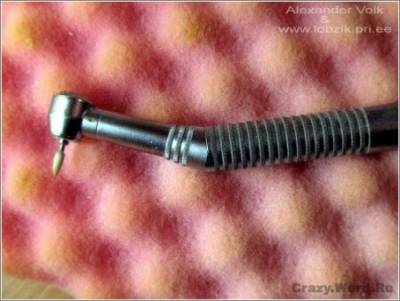
and then slowly cut away appropriate sections of the design of your egg. 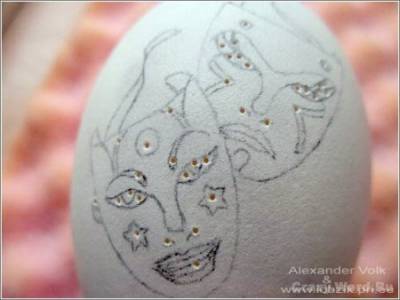
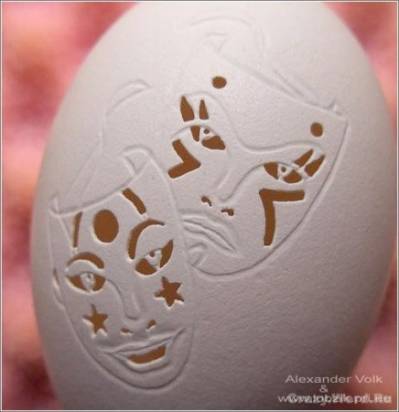 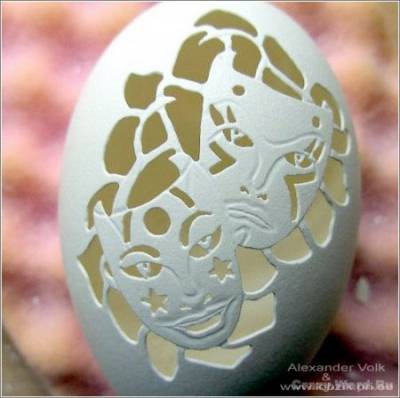
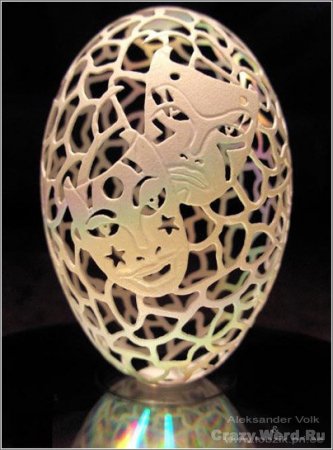 |
|
Category: Speaking about dances and art (by Megastarosta) |
Views: 1295 |
Added by: Megastarosta
| Rating: 0.0/0 |
|
|
| Tags Cloud |
|
 |
| Statistics |
Total online: 14 Guests: 14 Users: 0 |
 |
| Chat window |
|
|
 |
| Calendar |
| « January 2011 » |
| Su |
Mo |
Tu |
We |
Th |
Fr |
Sa |
| | | | | | | 1 | | 2 | 3 | 4 | 5 | 6 | 7 | 8 | | 9 | 10 | 11 | 12 | 13 | 14 | 15 | | 16 | 17 | 18 | 19 | 20 | 21 | 22 | | 23 | 24 | 25 | 26 | 27 | 28 | 29 | | 30 | 31 | |
 |
| Entries archive |
|
 |
|












